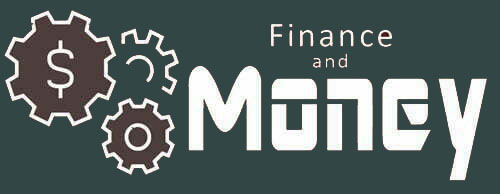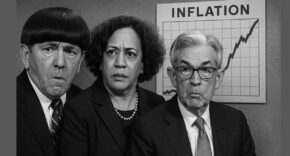A financial advisor helps people manage money and reach goals. They can set priorities, build budgets, and guide short and long-term plans such as buying a home or saving for college. Advisors review and rebalance investments, plan for retirement, coordinate tax strategies, and help with estate planning so assets pass the way you intend. They also coach you through market swings. As one expert put it, an adviser can take the emotion out of investing and planning. “A good financial adviser will be open,” said Shari Greco Reiches, adding that you should “meet face to face” when possible and “go with your gut.”
If you lack time or interest to manage your portfolio, or you face a complex situation with business income, taxes, or retirement decisions, professional help can add clarity and discipline.
What a good financial advisor looks like
Start with duty of care and credentials. Certified financial planners have a fiduciary duty to act in a client’s best interests as part of their certification. Registered investment advisors are also bound by fiduciary duty, and they register with the U.S. Securities and Exchange Commission or state regulators, depending on assets managed. Ask any prospect if they will act as your fiduciary at all times. As Lynnette Khalfani-Cox explained, some providers can give advice that is not always best for you, which is why you should seek an advisor who abides by the fiduciary standard.
Beyond credentials, look for transparency about fees, clear explanations of planning tools, and a communication style that makes you comfortable. “You want someone who is empathetic and has the emotional intelligence to work with you,” said Carina Diamond. If you cannot be fully open about goals and worries, that advisor is not the one.
How to find the right advisor
Begin with trusted referrals from friends and colleagues, then verify everything. You can also search professional directories, including the National Association of Personal Financial Advisors, the CFP Board, PlannerSearch.org, GarrettPlanningNetwork.com, and referral services that match consumers with vetted fee-only fiduciaries. Decide if you prefer a large brokerage with a wealth arm, a registered investment advisory firm, or an independent CFP. Think about how you want to meet, whether local knowledge matters, and whether you want one holistic planner or targeted specialists.
Traditional financial advisors can cover most or all planning needs and offer ongoing guidance, either locally or online. Advice-only planners focus on plans without managing investments. Robo-advisors automate portfolio management using your goals and risk tolerance, often with optional human support at higher tiers. Robo platforms fit simple situations at very low cost. Human advisors fit complex situations or when you want a long-term relationship.
Companies such as Betterment, Wealthfront, and Vanguard Personal Advisor Services offer automated portfolios with access to human advisors. For straightforward needs and lower balances, these hybrid services can be a practical bridge between do-it-yourself and full-service advice.
What it costs
Costs vary by model and scope. Fee structures include assets under management, hourly, flat, retainers, and commissions.
- Assets under management fees commonly range from 0.5 percent to 2 percent per year, with an average near 1.05 percent. On $100,000, that is about $1,050 per year. On $500,000, it is about $5,000. On $1,000,000, it is about $10,000. Schedules often drop at higher asset levels.
- Hourly fees often fall between $200 and $400, with an average around $268.
- Flat annual fees average about $2,554.
- Retainers commonly run $2,000 to $7,500, with a typical average near $4,484.
- One-time comprehensive plans often cost $1,000 to $3,000.
- Robo-advisors typically charge 0.25 percent to 0.50 percent. On $100,000, that is $250 to $500 per year.
- Commission-based products can carry sales charges of 3 percent to 6 percent.
The Due guide captures the mindset well: “A good financial advisor isn’t an expense,” it notes, “they’re an investment.” That said, match the fee to the service you actually need.
Hidden costs to watch
Even with a fair advisory fee, underlying fund expenses still apply. Expense ratios range from roughly 0.03 percent for index funds to 1.5 percent or more for active funds. Trading can add transaction costs. Some firms assess account maintenance fees. A few high-end shops use performance fees. Ask for full disclosure in writing, and total everything.
When paying a fee might be worth it
Professional advice makes sense when your financial life is complex, when you are approaching retirement, or when you are prone to emotional decisions in volatile markets. The Due guide suggests asking whether better choices, tax planning, or avoiding mistakes could reasonably add one to two percent a year. If so, the fee may pay for itself. Also consider the time value. Multiply the hours you spend managing money by your hourly earning rate. If that number exceeds the advisory fee, delegating can be rational.
When you may not need to pay
If your finances are simple, you enjoy managing investments, or your portfolio is small, low-cost robo-advisors or DIY index funds may be the best fit. Paying one percent on $50,000 is $500 per year, which may be hard to justify if you only need a basic allocation. For a simple plan, a one-time project fee can deliver clear steps without ongoing costs.
Verify everything before you sign. Review Form ADV on the SEC website to understand services, fees, and any disclosures. Use FINRA’s BrokerCheck to view employment history and any disciplinary actions. The CFP Board database can confirm certification and note any public discipline. Confirm whether the advisor is a fiduciary and how they are compensated. Clarify account minimums, service scope, custody, and trading practices. Many firms offer a free consultation. Expect an engagement letter that outlines ethical principles and potential conflicts, then legal documents to sign. The advisor will gather your financial information before work begins.
Qualities to prioritize
Look for fiduciary commitment, transparent fees, a repeatable planning process, and coordination with your CPA or attorney when needed. Communication should be proactive and clear. Reiches emphasizes comfort and openness in the relationship, and she encourages clients to interview more than one candidate and to ask for references. “You’ll have a good rapport,” she said of the right fit, and that is essential for reaching your goals.
Key questions to ask in the first meeting
From the combined guidance:
- Are you a fiduciary, committed to acting in my best interest at all times
- How do you get paid, and what will I pay each year in total
- What services do you provide beyond investing, including tax planning, retirement income, insurance guidance, and estate planning
- What is your approach to planning and portfolios, and what tools do you use
- What kinds of clients do you typically work with, and do you have account minimums
- Do you have any conflicts of interest, including commissions or revenue sharing
- What information do you need from me to build the plan
- How often will we meet, how quickly do you respond, and what is the best way to reach you
- Will you collaborate with my CPA or attorney when needed
- May I speak with a few client references
Simone Johnson’s checklist adds two practical notes. First, ask “Are you a fiduciary” outright. Second, watch communication patterns. “If your advisor only reaches out to you when they want you to buy something, I think that is the kind of advisor that should be terminated,” Khalfani-Cox said.
Matching services to your budget
For simple portfolios, a robo-advisor at 0.25 percent to 0.50 percent can be cost-effective, and some programs have low barriers to entry. As balances and complexity grow, human advice often becomes more valuable. Fees at large wealth divisions may start near 0.80 percent and drop as assets rise. “Traditional asset-based compensation models steer financial advisors to focus on preretirees and retirees,” said Lei Deng, who noted that hourly and flat-fee structures are expanding access for midcareer clients.
Ask about sliding fee schedules that drop at higher balances. Fees are often negotiable for larger portfolios. Clarify what is included and use every service offered, from tax planning to withdrawal strategies. Review the arrangement each year as your needs and assets change. The Due guide recommends calculating a break-even point and considering your time value so you can judge whether the advisor is delivering results worth the cost.
Define what you need, then choose the model that fits. Verify fiduciary duty and credentials, compare fee structures, and ask direct questions about process and costs. Trust still matters. As Reiches advised, “Finally, you need to go with your gut.” Do that after careful vetting and clear math. The goal is not just higher returns, it is fewer mistakes, better decisions, and less stress over time. As the Due guide reminds us, “A good financial advisor isn’t an expense,” they are “an investment,” as long as the value you receive exceeds what you pay.





